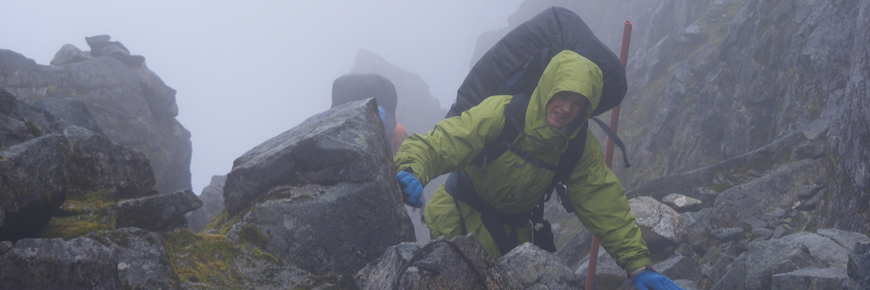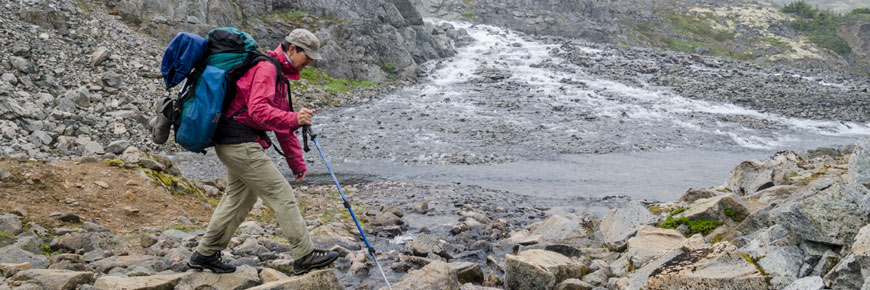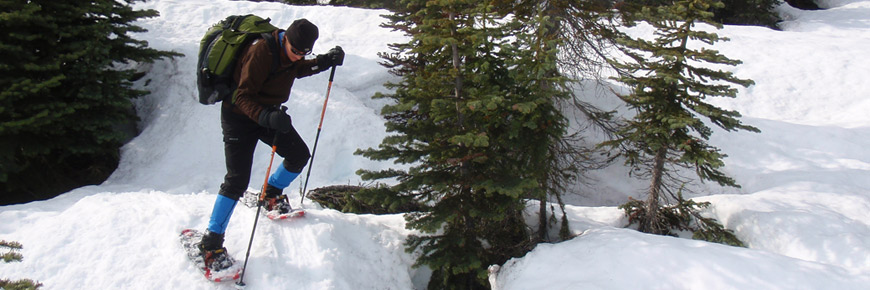
Equipment
Chilkoot Trail National Historic Site
Your main goal on the Chilkoot will be to stay warm and dry. Use equipment and clothing designed for cold, wet conditions; aim for quality, lightweight equipment. Carefully select and test all of your equipment. Synthetic or wool clothing is best. Have the capability to quickly prepare hot meals and drinks. Pack everything in plastic bags to keep it dry.
Think of your feet
Do not break in new boots on this hike. Be able to treat blisters adequately; apply moleskin to blister prone areas before starting to hike.
Trekking poles
Trekking poles can be helpful especially on snowfields, in rocky areas and for crossing creeks. The use of trekking poles has increased erosion along the Chilkoot Trail. Use your trekking poles only on snowfields or where you need them to ensure safety; avoid using your trekking poles on the exposed trail.
How much to carry

Your pack should fit well and weigh no more than 30% of your body weight. Before you leave home, test pack your pack. Reassess your pack contents if your pack is too heavy. Be realistic - every ounce counts.
What to take
Core items
- Backpack and waterproof pack cover
- Lightweight tent with rain fly and groundsheet
- Sleeping bag and insulating sleeping pad
- Stove, fuel, cook set and matches
- Water bottle and purification kit
- Food for trip, plus an extra day's supply of food and fuel
- Litterbag
- Map
- Toilet paper
Clothing
- Sturdy, comfortable, well broken-in hiking boots
- Rain jacket and pants
- Gaiters
- Insulating layers (wool and synthetics are best)
- Windbreaker
- Extra change of clothes and socks
- Wool hat and mittens
- Sun hat and sun glasses
- Shorts
- Lightweight shoes for around camp
Other
- Bear spray
- Sunscreen
- Insect repellent
- Pocketknife
- Flashlight (August)
- Repair kit for equipment
- First aid and blister kits
- Whistle for emergencies
- Sturdy cord to secure your tent to tent platforms
- Identification and proof of citizenship
Early season travel equipment

Winter travel equipment is recommended for travel in early June. As the season progresses you will have to balance the benefits of easier travel on the snow with the disadvantage of the additional weight of this equipment. Check with the Trail Center for up-to-date early-season travel conditions (907-983-9234).
- Snowshoes
- Heavier backpacking boots
- Gaiters & waterproof/breathable over pants
- Ice axe or trekking poles
When travelling in avalanche terrain during the winter it is standard protocol to carry an avalanche transceiver, probe and shovel. On the Chilkoot Trail, avalanche hazard may persist into mid July. While traveling early and not stopping in avalanche paths can mitigate some of this risk, early season travelers may still choose to carry personal avalanche rescue equipment.
Related links
- Date modified :